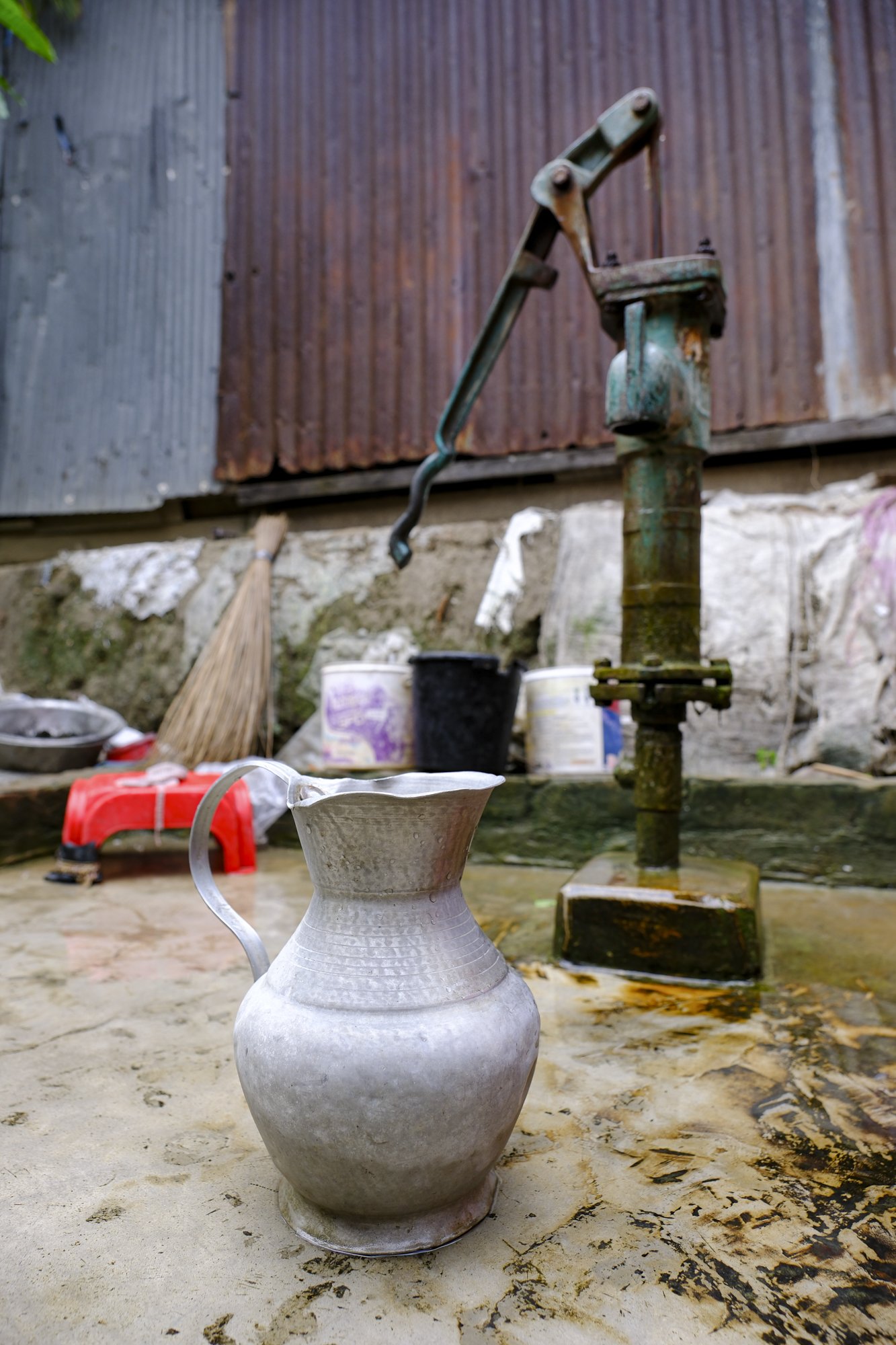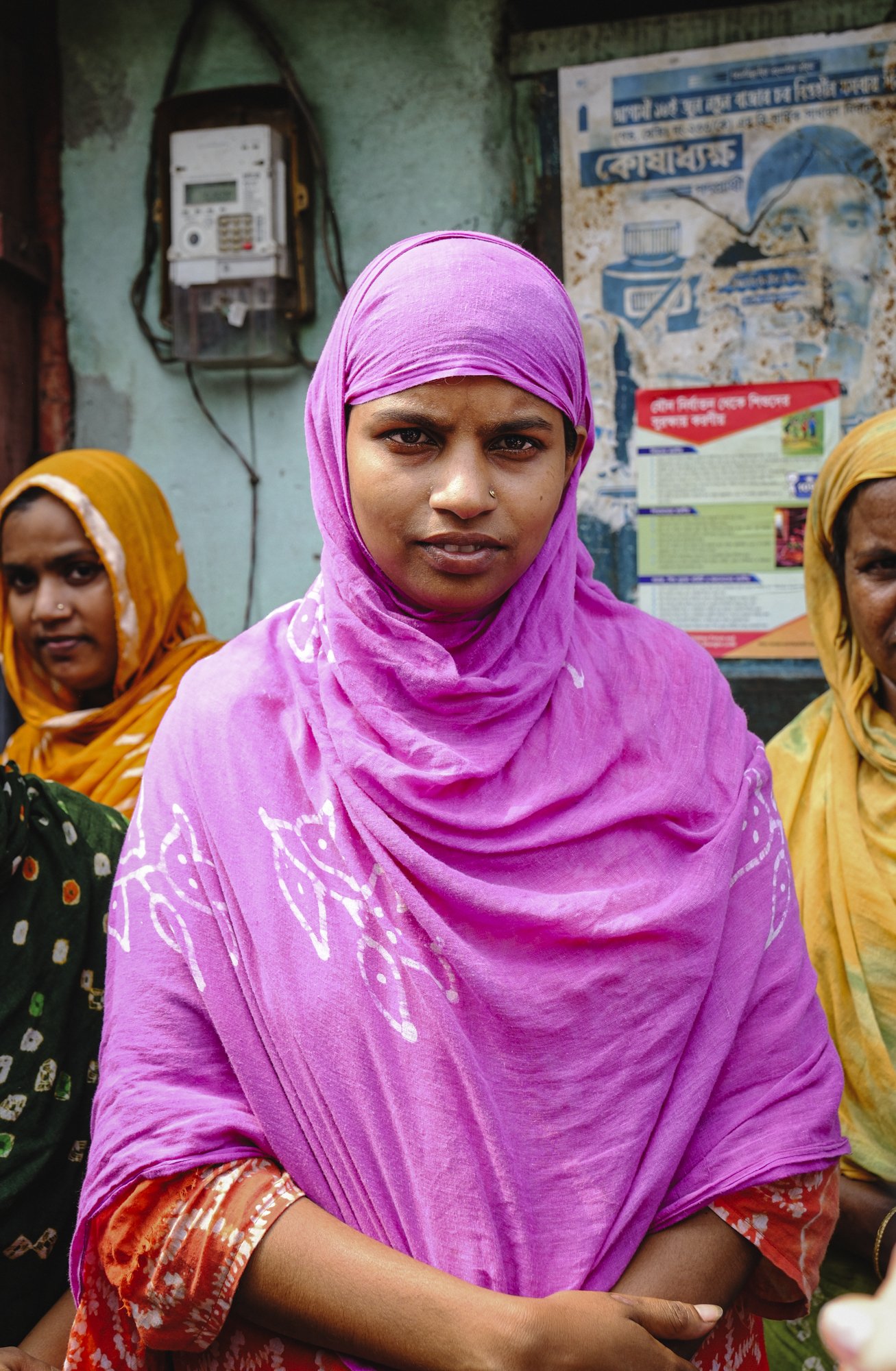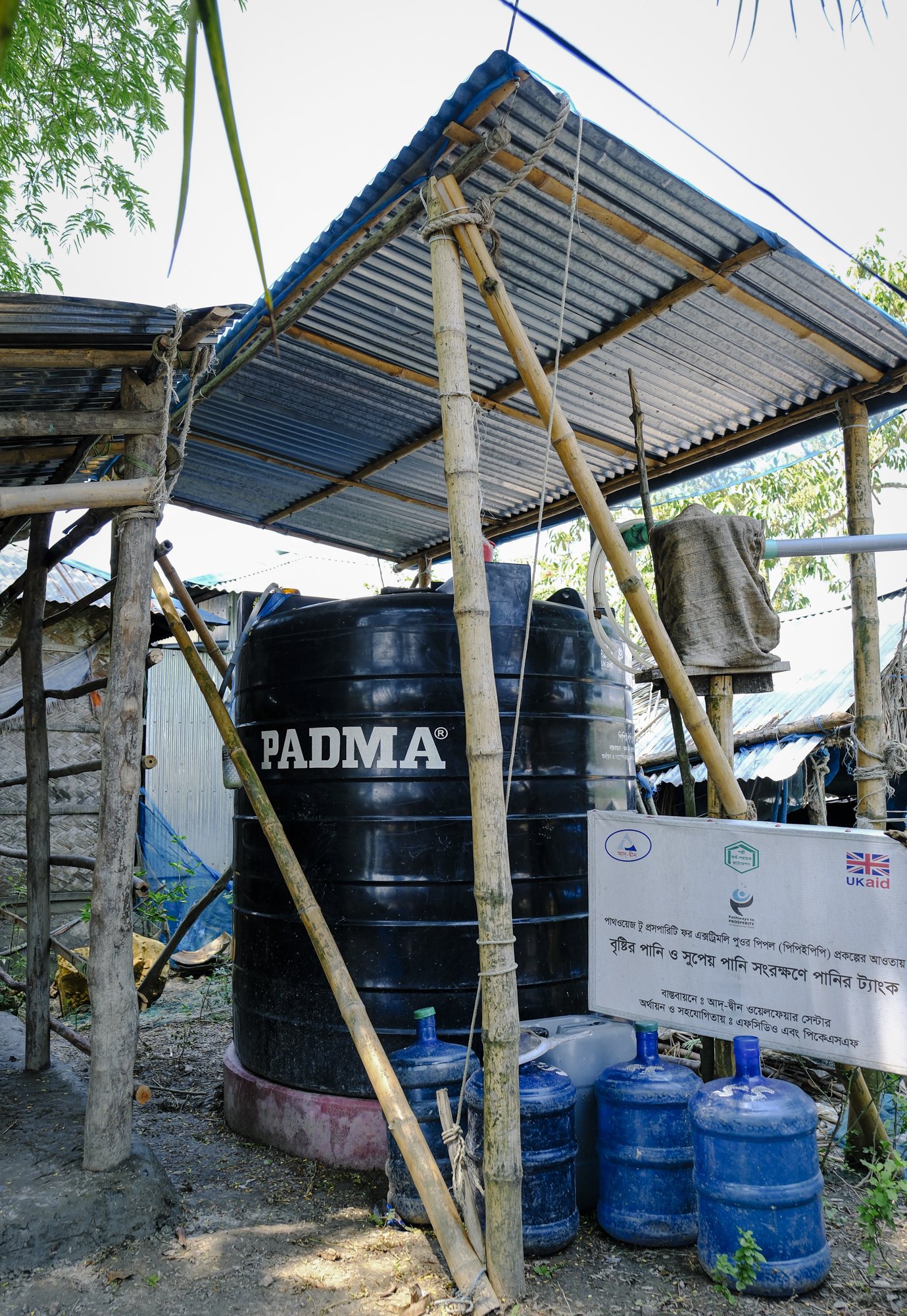Women and Water
Only 60% of Bangladesh has access to safe, clean water, and likely women are the ones to gather it.
Story with Claire Benard
https://mjabangladesh.com/2024/05/27/water-conflicts-on-the-rise/

Rubi Begum, sat sweating outside her home in Notunbazar, the second-largest slum in Khulna, Bangladesh.

Koloshe, a traditional Bangladeshi pot used for collecting water sits in front of a water pump. The water pump digs deep into the soil to pull up saline-free water. Water can be used for drinking, washing clothes or other sanitary needs.

A Bangladeshi woman carries a koloshe through the streets of Notunbazar, the second-largest slum in Khulna. Koloshes, a traditional Bangladeshi pot, can hold around 5 liters at a time. Women use the pots to collect water from pumps, a journey that can take anywhere from 30 minutes to an hour.

A women walks down a beach full of burning trash to wash her clothing in the Buriganga River, the most polluted river in Bangladesh. Bengali's often burn trash to manage the amount of waste they produce, leading to pollution in the air and water.

A lady washing pants in the Buriganga river.

Shani Akter was born in the slums and has lived there for 23 years.

A 2,000-liter rainwater collection tank used for drinking water in the delta of Bangladesh. Although tanks like this that are funded by local welfare centers are helpful, it doesn't supply enough water for entire villages of people.